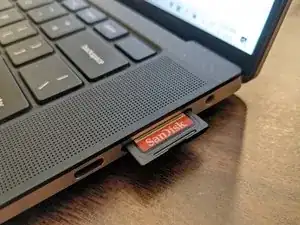
How to format an SD Card
Secure Digital, commonly known as SD card, is a proprietary non-volatile memory card developed by the SD Card Association. It was specifically designed for use in portable devices such as digital cameras, laptops, and mobile phones. The SD Card Association, formed by SanDisk, Panasonic, and Toshiba, introduced the standard card in 1999, building upon the foundation laid by the MultiMediaCard, a memory card used for solid-state storage. The first SD cards were made available worldwide in 2000.
In 2003 MiniSD cards were introduced as a smaller alternative to standard SD cards and were primarily aimed at mobile phones. However, over time, the miniSD format has largely fallen into obscurity. The popularity of miniSD cards diminished as the demand for smaller and more versatile memory card formats increased.
The main factor contributing to the decline of the miniSD format was the release of the even smaller microSD format, which offered comparable storage capacities and compatibility with a wide range of devices, in July 2005. The microSD format quickly gained traction and became the preferred choice for mobile phones, tablets, and other compact devices due to its smaller size and broader market adoption.
While miniSD cards may still be compatible with some older devices and niche applications, their usage has significantly diminished, and they are no longer as prevalent as they once were.
One important aspect of SD cards is their speed rating, which indicates the read and write speeds. Older cards were often labeled with a "time" or "x" rating, while newer ones incorporate a Speed Class Rating or bus rate. It's worth noting that if a card falls below a certain speed class rating, it may not function optimally with certain devices.
In terms of card security, users can take measures to protect the content stored on their SD cards. These measures include enabling write protection to prevent accidental erasure, restricting access to non-authorized users, and safeguarding copyrighted content.
There are three sizes of SD Cards:
The standard SD card format encompasses several variations:
The dimensions for the standard SD card are 32 mm × 24 mm × 2.1 mm. There is also a thinner variant known as Thin SD, with dimensions of 32 mm × 24 mm × 1.4 mm (although this format is relatively rare).
MiniSD cards were introduced as a smaller alternative to standard SD cards. The miniSD format includes the following variations:
The dimensions for miniSD cards are 21.5 mm × 20 mm × 1.4 mm.
MicroSD is the smallest SD card format and is widely used in mobile devices and other compact devices. The microSD format includes the following variations:
The dimensions for microSD cards are 15 mm × 11 mm × 1.0 mm.
SD cards are also rated based on their speed capabilities, allowing users to choose cards suitable for their specific needs. The speed rating system provides information about the minimum sustained write speeds of the cards. The following are the commonly used speed classes: